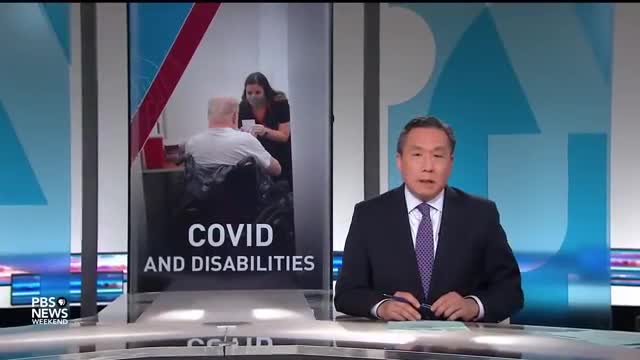Disabled community voices concerns as COVID precautions fade

This article was created by AI summarizing key points discussed. AI makes mistakes, so for full details and context, please refer to the video of the full meeting. Please report any errors so we can fix them. Report an error »

The ongoing impact of COVID-19 continues to be a pressing concern for individuals with disabilities, even as the overall pace of fatalities has slowed significantly in the United States. The nationwide death toll has surpassed 1 million, yet many in the disability community express heightened anxiety as public health precautions, such as mandatory masking and social distancing, have been lifted.
Voices from the disability community reveal a stark reality: for many, the threat of COVID-19 remains very real. Naomi Ben Porath, a 26-year-old from Lowell, Massachusetts, who suffers from postural orthostatic tachycardia syndrome, shared her increased nervousness about venturing out in the current climate. Similarly, Ngozi Alston, living with scleroderma, highlighted the pervasive sense of erasure felt by disabled individuals in public spaces, stating, \"We are not part of mass movement. We can't be. They're not safe.\"
Others echoed these sentiments. Germaine Greaves, who has cerebral palsy and hidradenitis suppurativa, expressed fear of illness and its potential consequences. John Ross, a 71-year-old with chronic lymphocytic leukemia, noted his avoidance of restaurants and indoor spaces, while Julie Lam, who is immunocompromised, lamented the inability to see doctors due to safety concerns.
The emotional toll of the pandemic is evident, with many reporting feelings of isolation and disconnection from society. Natalie Lampros, who has multiple health conditions, described the burden of advocating for her own safety in social situations, stating, \"The burden is constantly on me as the disabled person.\"
As the national discourse shifts towards a sense of normalcy, many in the disability community feel left behind. \"It used to be, like, we are in this together. Now? No. You do you. You're on your own,\" one participant remarked, emphasizing the need for collective responsibility in protecting vulnerable populations.
Advocates urge the public to consider the broader implications of their actions, emphasizing that community care benefits everyone. \"You giving them COVID could be literally life or death,\" one advocate warned, imploring individuals to think beyond themselves when it comes to health precautions.
In a related note, a recent Gallup poll revealed that the cost of housing has emerged as a top personal finance concern for Americans this election year, second only to inflation. This reflects a growing anxiety about economic stability as the nation navigates the ongoing repercussions of the pandemic.
Voices from the disability community reveal a stark reality: for many, the threat of COVID-19 remains very real. Naomi Ben Porath, a 26-year-old from Lowell, Massachusetts, who suffers from postural orthostatic tachycardia syndrome, shared her increased nervousness about venturing out in the current climate. Similarly, Ngozi Alston, living with scleroderma, highlighted the pervasive sense of erasure felt by disabled individuals in public spaces, stating, \"We are not part of mass movement. We can't be. They're not safe.\"
Others echoed these sentiments. Germaine Greaves, who has cerebral palsy and hidradenitis suppurativa, expressed fear of illness and its potential consequences. John Ross, a 71-year-old with chronic lymphocytic leukemia, noted his avoidance of restaurants and indoor spaces, while Julie Lam, who is immunocompromised, lamented the inability to see doctors due to safety concerns.
The emotional toll of the pandemic is evident, with many reporting feelings of isolation and disconnection from society. Natalie Lampros, who has multiple health conditions, described the burden of advocating for her own safety in social situations, stating, \"The burden is constantly on me as the disabled person.\"
As the national discourse shifts towards a sense of normalcy, many in the disability community feel left behind. \"It used to be, like, we are in this together. Now? No. You do you. You're on your own,\" one participant remarked, emphasizing the need for collective responsibility in protecting vulnerable populations.
Advocates urge the public to consider the broader implications of their actions, emphasizing that community care benefits everyone. \"You giving them COVID could be literally life or death,\" one advocate warned, imploring individuals to think beyond themselves when it comes to health precautions.
In a related note, a recent Gallup poll revealed that the cost of housing has emerged as a top personal finance concern for Americans this election year, second only to inflation. This reflects a growing anxiety about economic stability as the nation navigates the ongoing repercussions of the pandemic.
View full meeting
This article is based on a recent meeting—watch the full video and explore the complete transcript for deeper insights into the discussion.
View full meeting